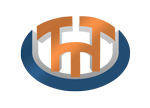In the intricate ballet of modern automobile manufacturing, precision isn’t just desirable – it’s non-negotiable. Every component must fit flawlessly, ensuring structural integrity, safety, aesthetics, and performance. Among the critical structural elements hidden beneath the skin is the cross-car beam. Acting as a backbone within the dashboard or instrument panel area, it provides essential rigidity, supports critical components like steering columns and airbags, and serves as an anchor point for numerous interior parts. Ensuring this complex component meets exact design specifications is where a specialized, often overlooked, tool becomes indispensable: the Cross-Car Beam Checking Fixture.
More Than Just a Holder: The Fixture’s Mission
Think of a checking fixture as the ultimate quality control “judge” for a specific part. For a cross-car beam, this fixture isn’t a simple clamp. It’s a meticulously engineered, rigid structure, typically crafted from high-grade aluminum or steel, that replicates the exact geometry and critical mounting points defined in the vehicle’s CAD data.
Its core functions are vital:
Precision Verification: The fixture holds the beam in its precise nominal position – the exact location and orientation it would occupy in the final vehicle. Operators or automated systems then use calibrated measurement tools (like touch probes, CMM arms, or dedicated gages) to check hundreds of critical points on the beam against the CAD model. This verifies dimensions, hole locations, bracket angles, and surface profiles with micron-level accuracy.
Mounting Point Validation: Cross-car beams have numerous attachment points for steering systems, airbags, HVAC units, wiring harnesses, and trim panels. The fixture replicates these mating interfaces. Ensuring pins, locators, and clamps on the fixture align perfectly with the beam’s holes and brackets guarantees the beam will interface correctly with all downstream components during assembly. A misaligned mount here could spell disaster later.
Dimensional Stability & Warpage Check: Due to their length and complex shape, cross-car beams (especially those made from tubular steel or aluminum extrusions) can be susceptible to warping during manufacturing or handling. The fixture provides the master reference surface to detect any deviations from flatness or unintended bends.
First Article Inspection (FAI) & Production Control: Checking fixtures are essential for rigorously validating the very first beams off a new production line (FAI). They then become the backbone for ongoing production quality control, allowing for rapid, consistent inspection of samples pulled from the line, catching drift before it becomes a major issue.
Designing for Accuracy and Efficiency
Creating an effective cross-car beam checking fixture demands expertise:
CAD Mastery: Fixtures are designed directly from the released 3D CAD models of both the beam and the vehicle’s under-dash structure.
Material Selection: Aluminum is common for its lightweight and corrosion resistance, while steel offers maximum rigidity for very large or heavy beams.
Precision Machining & Fabrication: All locators, clamps, datum simulators, and measurement points must be machined to extremely tight tolerances.
Ergonomics & Accessibility: Designers must ensure operators can easily load/unload the beam and access all measurement points safely and efficiently.
Durability: Fixtures endure constant use in potentially harsh factory environments. Robust construction is essential for long-term accuracy.
Measurement Integration: Modern fixtures often incorporate integrated measurement systems (like Romer arms or laser trackers) or are designed for seamless use with portable CMMs.
The Tangible Benefits: Beyond Just Checking a Box
Investing in a high-quality cross-car beam checking fixture delivers significant returns:
Preventing Costly Rework & Scrap: Catching defects before the beam reaches the final assembly line avoids expensive disassembly, rework, or scrapping of nearly complete vehicles.
Ensuring Safety: Correct mounting and geometry of the beam are critical for the proper deployment of airbags and the structural integrity surrounding the driver. Fixtures are a frontline safety tool.
Guaranteeing Fit & Finish: Accurate beams ensure dashboards, consoles, and steering columns fit perfectly, eliminating unsightly gaps, squeaks, or rattles that plague poor-quality vehicles.
Streamlining Assembly: Beams verified on a robust fixture integrate smoothly into the vehicle body, preventing assembly line bottlenecks caused by misfits.
Supporting Continuous Improvement: Consistent measurement data from the fixture helps identify trends in the manufacturing process, enabling proactive improvements.
The Bottom Line
While hidden from the final customer’s view, the cross-car beam checking fixture is a silent guardian of automotive quality, safety, and efficiency. It transforms complex CAD data into physical validation, ensuring this crucial structural component meets the relentless demands of modern vehicle assembly. For any manufacturer serious about precision, reliability, and brand reputation, investing in expertly designed and maintained cross-car beam checking fixtures isn’t just good practice – it’s an absolute necessity. They are the unsung heroes ensuring the hidden backbone of your car’s interior is built right, every single time.
Post time: Jun-05-2025


.png)
.png)